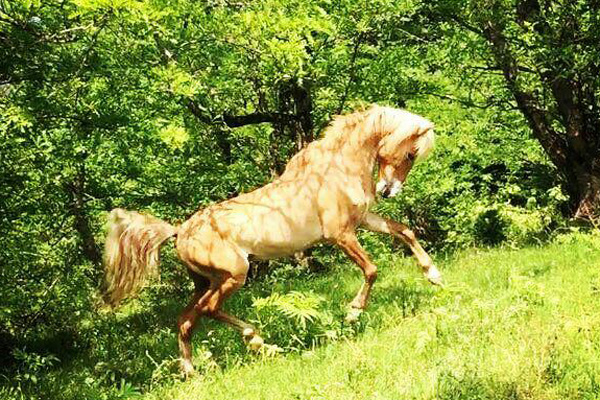Since admixture can affect patterns of genetic diversity, we estimated the contribution of three Middle Eastern horse breeds (Arab, Akhal Teke, Caspian) to all other breeds in our dataset.
Vera Warmuth1,2*, Anders Eriksson1 , Mim A. Bower2 , Javier Can˜ on3 , Gus Cothran4 , Ottmar Distl5 ,Marie-Louise Glowatzki-Mullis6 , Harriet Hunt2 , Cristina Luı´s7 , Maria do Mar Oom8 , Isabel Tupac Yupanqui3 , Tomasz Za˛ bek9 , Andrea Manica1*
1 Department of Zoology, University of Cambridge, Cambridge, United Kingdom, 2 McDonald Institute for Archaeological Research, University of Cambridge, Cambridge, United Kingdom, 3Departamento de Produccio´n Animal, Facultad de Veterinaria, Universidad Complutense, Madrid, Spain, 4 Animal Genetics Laboratory, VIBS, CVM, Texas A&M University, College Station, Texas, United States of America, 5 Institute for Animal Breeding and Genetics, University of Veterinary Medicine Hannover, Hannover, Germany, 6 Institute of Genetics, Vetsuisse Faculty, University of Bern, Bern, Switzerland, 7 Museus da Polite´cnica (MNHN & MCUL), Universidade de Lisboa, Lisbon, Portugal, 8 Centro de Biologia Ambiental, Universidade de Lisboa, Lisbon, Portugal, 9 Laboratory of Genomics, National Research Institute of Animal Production, Krakowska 1, Balice, Polan
Abstract
The role of European wild horses in horse domestication is poorly understood. While the fossil record for wild horses in Europe prior to horse domestication is scarce, there have been suggestions that wild populations from various European regions might have contributed to the gene pool of domestic horses. To distinguish between regions where domestic populations are mainly descended from local wild stock and those where horses were largely imported, we investigated patterns of genetic diversity in 24 European horse breeds typed at 12 microsatellite loci. The distribution of high levels of genetic diversity in Europe coincides with the distribution of predominantly open landscapes prior to domestication, as suggested by simulation-based vegetation reconstructions, with breeds from Iberia and the Caspian Sea region having significantly higher genetic diversity than breeds from central Europe and the UK, which were largely forested at the time the first domestic horses appear there. Our results suggest that not only the Eastern steppes, but also the Iberian Peninsula provided refugia for wild horses in the Holocene, and that the genetic contribution of these wild populations to local domestic stock may have been considerable. In contrast, the consistently low levels of diversity in central Europe and the UK suggest that domestic horses in these regions largely derive from horses that were imported from the Eastern refugium, the Iberian refugium, or both.

